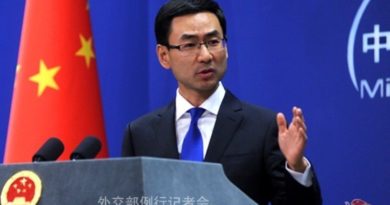Communist Countries in the World – Cuba (Republic of Cuba) – Part 2/7
A List of Current Communist Countries in the World
:max_bytes(150000):strip_icc():format(webp)/communist-countries-overview-1435178_FINAL2-2d1932314ea14f93904d11691cef8bb1.png)
Thought Co / Melissa Ling
.

During the time of the Soviet Union (1922–1991), communist countries could be found in Eastern Europe, Asia, and Africa. Some of these nations, like the People’s Republic of China, were (and still are) global players in their own right. Other communist countries, such as East Germany, were essentially satellites of the U.S.S.R. that played a significant role during the Cold War but no longer exist.
Communism is both a political system and an economic one. In politics, communist parties have absolute power over governance, and elections are single-party affairs. In economics, the party controls the country’s economic system, and private ownership is illegal, although this facet of communist rule has changed in some countries like China.
By contrast, socialist nations are generally democratic with multi-party political systems. A socialist party does not have to be in power for socialist principles—such as a strong social safety net and government ownership of key industries and infrastructure—to be part of a nation’s domestic agenda. Unlike communism, private ownership is encouraged in most socialist nations.
The basic principles of communism were articulated in the mid-1800s by Karl Marx and Friedrich Engels, two German economic and political philosophers. But it wasn’t until the Russian Revolution of 1917 that a communist nation—the Soviet Union—was born. By the middle of the 20th century, it appeared that communism could supersede democracy as the dominant political and economic ideology. Yet today, only five communist countries remain in the world.
.

Cuba (Republic of Cuba)
:max_bytes(150000):strip_icc():format(webp)/Communist-Cuba-58b9cde83df78c353c384ad5.jpg)
A revolution in 1953 led to the takeover of the Cuban government by Fidel Castro and his associates. By 1965, Cuba became a fully communist country and developed close ties to the Soviet Union. At the same time, the United States imposed a ban on all trade with Cuba. Because of this, when the Soviet Union collapsed in 1991, Cuba was forced to find new sources for trade and financial subsidies. It did so in countries including China, Bolivia, and Venezuela.
In 2008, Fidel Castro stepped down and his brother, Raul Castro, became president; Fidel died in 2016. During U.S. President Barack Obama‘s second term, relations between the two nations were relaxed and travel restrictions loosened. In June 2017, however, President Donald Trump rolled this back and tightened travel restrictions on Cuba.

READ NEXT
03
Laos (Lao People’s Democratic Republic)
:max_bytes(150000):strip_icc():format(webp)/LaosFlag-58b9cde55f9b58af5ca7d22a.jpg)

SIGN UP TO RECEIVE OUR EMAIL
The most important news of the day about the ASEAN Countries and the world in one email: [email protected]











